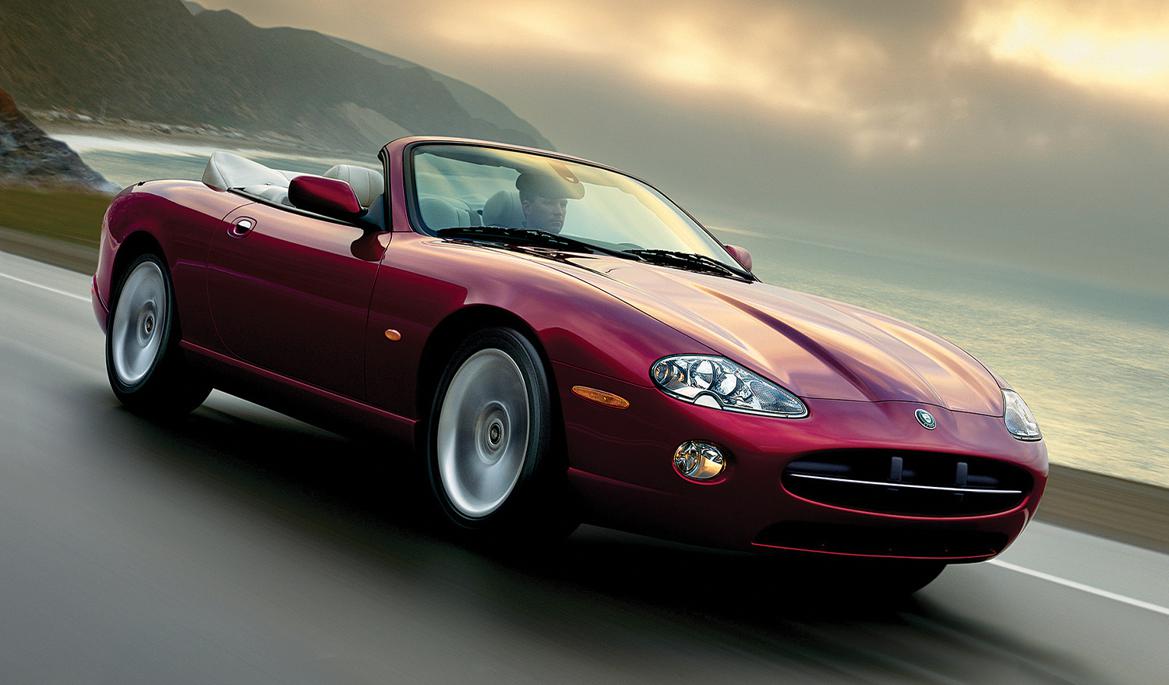[Editor's Note: This article orignally ran in the November 2012 issue of Classic Motorsports. Some information may be different today.}
The XK8 was the first all-new sporting Jaguar since the introduction of the XJS in 1975, and it seemed to be the answer to what Jaguar owners had been asking for. It looked like a mix of the E-type and the Aston DB7 and was a sensation from the start.
The interior was just as nice as the exterior, featuring the Jaguar trademarks of Connolly leather, Wilton wool carpets and more wood on the dash than in any previous Jaguar. Add to that climate control that worked and modern conveniences like parking assistance, and you had a truly world-class car.
Jaguar also offered a pair of body styles, with the traditional coupe joined by a convertible. During the model run, in fact, the open car outsold the coupe by a huge margin.
When new, the XK8 was an expensive car with a base price in coupe form of $70,495; the convertible went for $75,495.
The new XK8 had go to match its show: a brand-new, Jaguar-designed, 4-liter V8 featuring four cams and 32 valves. This was the first new engine for Jaguar since the introduction of the AJ6 a decade before.
Unfortunately for some, the XK8 only came equipped with an automatic transmission, but even the griping about the slushbox diminished over time. The car had impressive performance figures, traveling from zero to 60 in a very respectable 6.4 seconds and a quarter-mile time of 14.8 seconds.
In 2002, the engine displacement was upped to 4.2 liters, and the four-speed, ZF-sourced automatic was upgraded to a Mercedes-Benz five-speed unit. Performance picked up a bit but, more importantly, the engine also received an upgraded water pump, better chain tensioners, and cast-iron cylinder liners.

Care and Feeding
The 4-liter engine used on the earlier cars does have some issues in its past. In some cases, the Nikasil coating applied to the cylinder walls flaked off, leading to a drop in compression. Bad engines were typically replaced under warranty.
These engines were used until mid-2001, but don’t worry too much about it. Simply have a compression test performed. If the car has good compression numbers at this point, this problem is unlikely to rear its ugly head. If you are still concerned about the engine, simply buy a 2002-or-later model and drive worry-free.
Other issues are the water pump and chain tensioners. Both are prone to premature wear and have been superseded by the parts used in the later 4.2-liter engine. If these have not been attended to, just factor their replacement into the cost of the earlier 4-liter car. Since the car has an interference engine, you want the later tensioner system; the later water pump is preferred, too.
If you want to save a little money, simply buy the parts and follow one of the many online tutorials to replace them yourself. The jobs are not too difficult.
Last Piece of Advice
At these kinds of prices, the XK8 may be the GT car deal of the century. The XK8 compares very favorably with another British legend, the Aston Martin DB7—and in some ways it may be the better car.
So entertain those James Bond notions on a budget, and go get yourself an XK8. We would recommend a coupe, say a silver one with black leather.
Comments

Fonzie
New Reader
6/23/19 9:01 a.m.
In 2002, the engine displacement was upped to 4.2 liters, and the four-speed, ZF-sourced automatic was upgraded to a Mercedes-Benz five-speed unit.
It is the supercharged 4.0 liter that used the Mercedes gear box. The others used a ZF, all 5 speed.
Then came the 4.2 L, all using a ZF 6 speed unit. None of the XK8 received a 4 speed unit.
I bought one of these in 2012 in part because of this article, a 2000 XK8 Coupe which I still have.
Nikasil was phased out in mid-2000, but any cars running today will either have failed already or won't.
Displaying 1-2 of 2 commentsView all comments on the CMS forums
You'll need to log in to post.























